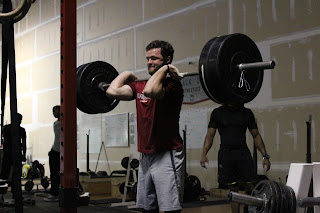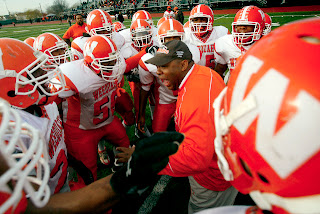Why Should I Warm Up?

The purpose of the warm-up is to lubricate the joints, increase the responsiveness of the central nervous system, prepare the body for the specific movements, and increase the body’s core temperature. The lubrication of the joints makes moving the joints easier. The bending of the knee is critical when sprinting, but will never be accomplished with stiff joints. The joints are better lubricated when the body is warm and able to produce fluid that easily flows to keep the joints moving. When a door has not been lubricated properly, it doesn’t function properly, doesn’t open and shut easily, and makes an irritating noise that confirms its problem.
The brain sends messages to the muscles to tell them to move. The central nervous system must be awake to clearly signal to the muscles, and quickly and efficiently recruit as much muscle fiber as needed to perform a specific movement. If the brain does not send the signal efficiently, the body can’t perform that movement with the required speed, which increases the athlete’s risk of injury. There are certain drills that excite the nervous system because they demand more muscle fibers to perform the movements. These drills must be progressive from slower exercises to faster exercises to avoid injury.
Preparing the body for specific movements by using exercises that activate the same muscles during the warm-up is essential. This method ensures the proper muscle groups are ready to move in any way they are needed. If you are going to use what is in a car engine to help the car operate, you don’t need to warm-up the tires to accomplish what only the engine is capable of. Sprints require the use of the glutes, hamstrings, hip muscles, and quadriceps, so, of course, it makes sense to warm-up the glutes, hamstrings, hip muscles, and quadriceps.
Increasing your core temperature also makes movement easier. Just like a warm rubber band can be manipulated more than a cold rubber band, a warm body allows joints and muscles to have a greater range of motion, so increasing the body’s temperature should be the first priority of a good warm-up. How can you tell if you are warm enough to begin exercise? A rule of thumb is to break a light sweat before sprinting or performing movements at high speeds. Most athletes start to warm-up their temperature within 10-20 minutes, depending on the level of preparedness of the athlete. Moreover, you do not want to turn the warm-up into a workout by making it too long. It will take away from your workout by using the energy reserves stored for the workout.
The warm-up must be versatile enough to be individualized because every athlete varies in mobility and the rate at which they increase their core temperature. The drills must have options for very mobile athletes and those who are less mobile. For instance, a mobile athlete might perform a spiderman crawl and a less mobile athlete might have to do a wide out. It is okay to vary the warm-up periodically because it will prevent the athletes from becoming bored. It will also challenge the range of motion of the athlete by making the body adapt to new positions.




Comments
Post a Comment